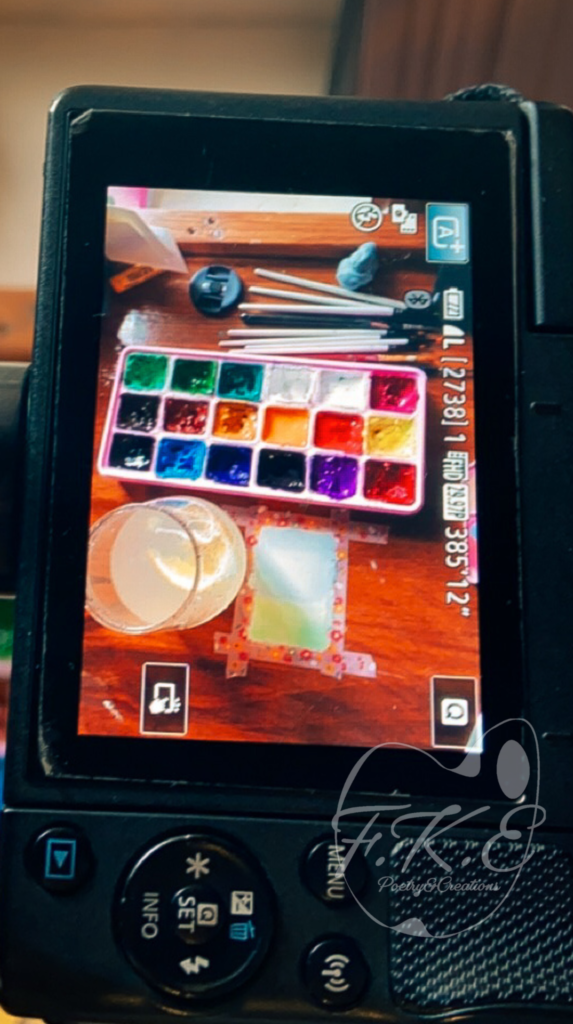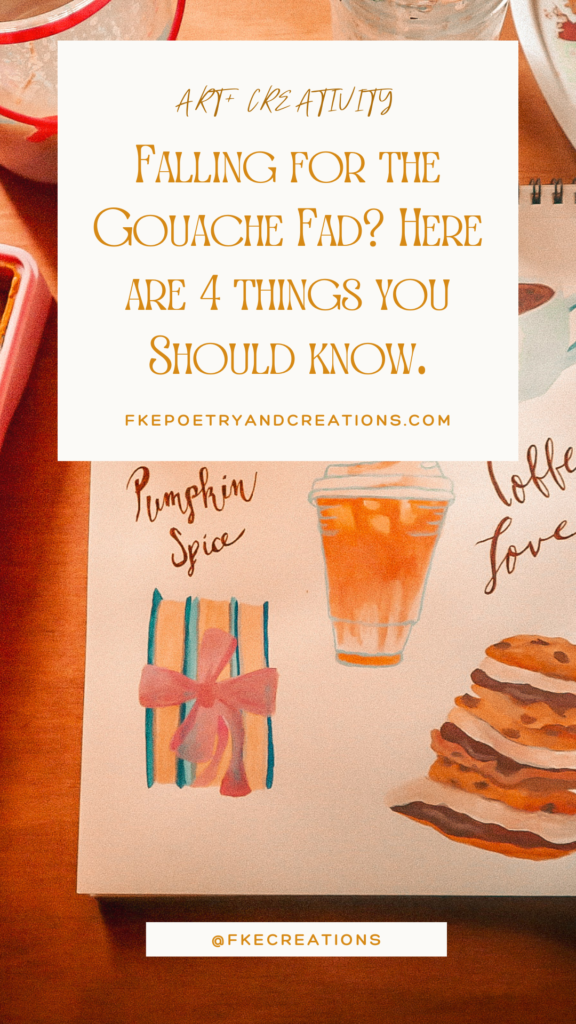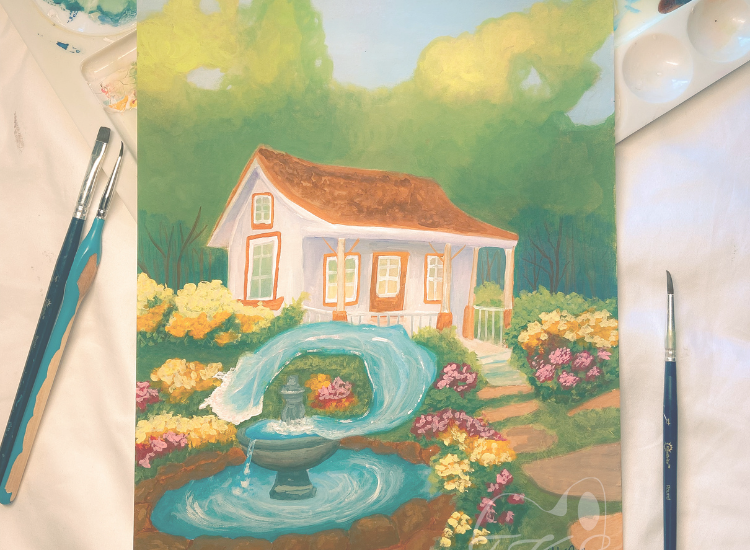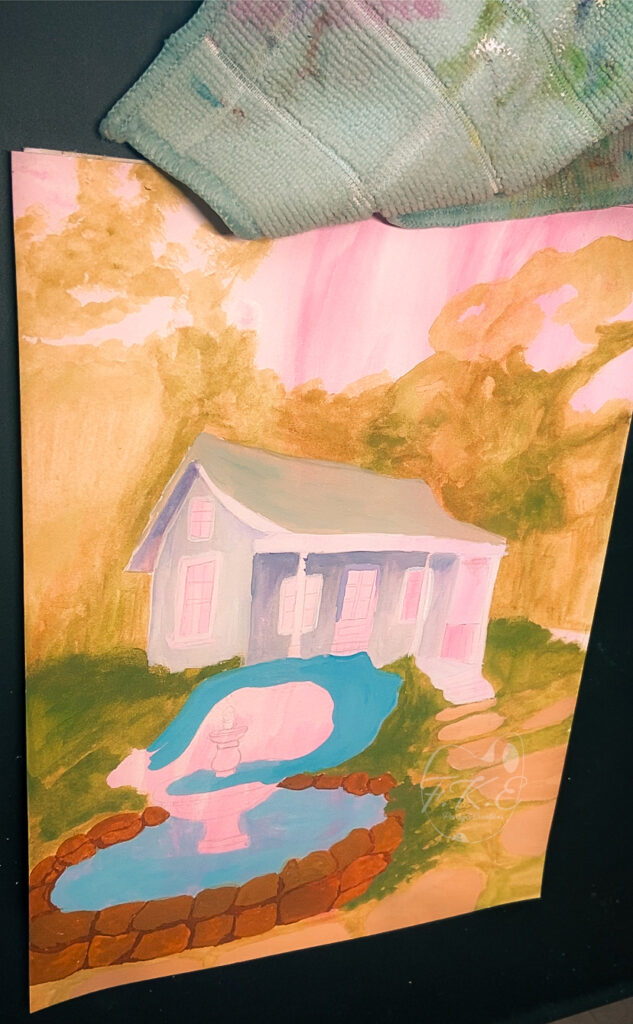White cubes Run out easily
]Painting 4×6 pieces every day, I ran out of both of my white HIMI gouache cubes in less than 2 months. I remember looking at different refill options before stumbling on a big gouache paint tube (my first step in leaving the HIMI gouache cube era).
Knowing I had a refill whenever I needed it made me less likely to skimp on adding white to my piece, however, my search for a refill did lead me to some other problems.
HIMI gouache cubes are hard to refill
Searching for a refill for white made me realize there were no HIMI gouache refill options for any of my other colors besides black and primary colors available in-store or online in the US.
At the time I was using an 18-color gouache set I bought for $20 and a giant tube of white Lukas gouache that was $7. This tube seemed to last longer and had a smoother consistency than my thick HIMI gouache paints, but blending the two gave me a nice consistency.

Photo of my earlier set up in 2021 ( with my lemonade). 😊
HIMI Gouache is thick
Compared to other brands I’ve tried, HIMI gouache has a very thick consistency, making watering it down correctly a challenge for beginners.
After switching to Turner design gouache, a smoother and more expansive gouache, I started to notice the differences between professional gouache and HIMI gouache.
Turner Design gouache is smoother, easier to layer, easier to blend colors, and works perfectly when used similar watercolor. In contrast, Gouache is thicker, a little harder to blend, layering is a bit tougher, and isn’t that easy to as a watercolor medium.

2022 cake design for my birthday made with HIMI gouache
HIMI Gouache Tubes need constant attention
If you’re someone who picks up your hobbies here and there or goes days without sitting down to paint, HIMI gouache cubes aren’t for you.
The cubes need consistent water sprints to be kept in good condition (about 2 or 3 times a day) and they are not as easy to revive as some reviews say they are.
Use a Palette Knife you won’t regret it
If you do decide to get HIMI gouache cubes, please please, please, use a palette knife. It is so easy to mix and muddy colors when using gouache cubes and while you may see aesthetic videos where they dip straight into the cube, I promise it’s for aesthetic purposes.
I can’t tell you the number of times I had to use a palette knife to get the unwanted color out of my cubes or how many times I ended up with a muddy color on my piece after dipping into a HIMI gouache cube.
Using a palette knife saves your painting’s life.

If you are a creative person in search of a cheap gouache option to express yourself, use HIMI gouache tubes. If you can spend a little more look into Lukas gouache tubes (they are pretty big tubes with good consistency and are great for beginners).
And finally, if you are an artist looking for professional grade gouache, I recommend Turner Design Gouache it’s smooth, vibrant, and you can use it with effortless ease. Here is a link for $20 for 12 colors on Amazon.


















